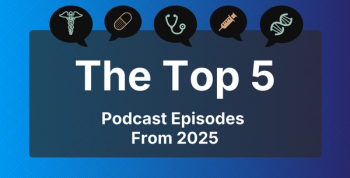
Access, Affordability for Low- and Moderate-Income Adults Under the ACA
A survey compares healthcare access and affordability among different types of coverage for low-and moderate-income adults.
Even with the expansion of Medicaid and an increase in those with health insurance, issues surrounding access and affordability continue. However,
Regardless of coverage type, all insured adults were more likely to have a usual source of care and to have a routine checkup than those who were uninsured. Those with Medicaid encountered more difficulties in setting up a regular appointment than those with Marketplace coverage. Those with Marketplace coverage did just as well as those with ESI or nongroup enrollees in finding a new doctor and Marketplace members had no more difficulties than those who were uninsured.
Rates of unmet need due to affordability did not vary much among adults with insurance, but rates of unmet need were typically higher for those who were uninsured. Marketplace members did not have greater unmet needs than those with ESI unless it was for medical tests, treatment, or follow-up care. There were no statistically significant differences in reports of difficulty paying medical bills between Marketplace enrollees and those with ESI or non-Marketplace nongroup coverage or the uninsured; difficulties were greater than those reported by Medicaid enrollees, though. Adults with Marketplace coverage had out-of-pocket healthcare costs equal to or exceeding $1500 more often than those with Medicaid, less often than those with non-Marketplace nongroup coverage, but as often as those with ESI. Adults with Marketplace coverage were more likely to face deductibles equal to or exceeding $1500 than those with ESI.
Individuals with Marketplace insurance were somewhat or very dissatisfied with their choice of doctors and providers—more so than those with ESI. Their dissatisfaction, however, was not statistically different from those with Medicaid or those with non-Marketplace nongroup coverage. Marketplace enrollees were just as dissatisfied with their premium as ESI enrollees and non-Marketplace nongroup enrollees, but were more dissatisfied than Medicaid enrollees. Adults under Marketplace coverage were just as dissatisfied with protection against high medical bills as those with nongroup coverage, but more than those with ESI or Medicaid. Overall, Marketplace enrollees seem generally as satisfied was those with other nongroup coverage but not as satisfied as adults with ESI or Medicaid.
In terms of access and affordability, they are better off than the uninsured, and doing as well as those with ESI or non-Marketplace nongroup coverage. Marketplace members are better off in terms of access, but not affordability in comparison to Medicaid members.
The authors asked the following questions: are those on Medicaid and in the Marketplace doing better than the uninsured; are they doing as well as those with employer-sponsored insurance (ESI) or non-Marketplace nongroup insurance; and are those in the Marketplace doing better or worse than those on Medicaid?
Using the Health Reform Monitoring Survey of September 2015, the sample included adults aged 18-64 and from families with incomes below 400% of the federal poverty line. The authors looked at healthcare access and affordability for those with consecutive insurance for the past 12 months, and also evaluated plan satisfaction. Coverage types included nongroup coverage through a health insurance Marketplace; ESI or coverage through the military; Medicaid, Medical Assistance, or CHIP; and non-Marketplace nongroup coverage. These groups were then compared to adults without insurance.
When measuring healthcare access, the team examined whether or not the group had a usual source of care, had had a routine checkup in the last 12 months, had trouble getting a regular doctor’s appointment in the last 12 months, and had trouble finding a new doctor in the last 12 months.
Affordability was evaluated according to unmet needs for certain types of care, drugs, tests, or treatments in the last 12 months due to cost; problems with paying medical bills in the last 12 months; out-of-pocket costs equal to or exceeding $1500 in the last 12 months; and an annual per-person deductible equal to or exceeding $1500 for nongroup or ESI coverage.
The team looked at individuals’ satisfaction with choice of doctor or provider, with coverage premiums, and their plans’ protection against high medical bills.
Newsletter
Stay ahead of policy, cost, and value—subscribe to AJMC for expert insights at the intersection of clinical care and health economics.








































